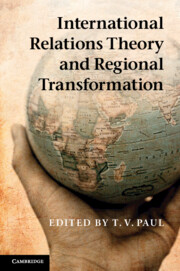Book contents
- Frontmatter
- Contents
- Figures and tables
- About the contributors
- Acknowledgments
- Part 1 Introduction
- Part 2 Realist perspectives
- Part 3 Liberal perspectives
- Part 4 Constructivist perspectives
- Part 5 Eclectic perspectives
- 10 The transformation of modern Europe
- 11 Top-down peacemaking
- Part 6 Conclusions
- Index
- References
11 - Top-down peacemaking
why peace begins with states and not societies
Published online by Cambridge University Press: 05 June 2012
- Frontmatter
- Contents
- Figures and tables
- About the contributors
- Acknowledgments
- Part 1 Introduction
- Part 2 Realist perspectives
- Part 3 Liberal perspectives
- Part 4 Constructivist perspectives
- Part 5 Eclectic perspectives
- 10 The transformation of modern Europe
- 11 Top-down peacemaking
- Part 6 Conclusions
- Index
- References
Summary
The common assumption that runs through most contemporary western approaches to fostering peace and stability between combatants in war-torn regions is that peace is a bottom-up process. The impetus for peace, they assume, is not from states but from their societies. Peace is achieved, therefore, by creating common interests and identities between the populations and key societal interest groups in the combatant societies, and then forging political institutions that allow society to restrain aggressive leaders. In other words, the path to peace consists of creating cooperative international institutions, fostering economic interdependence, and encouraging democratization.
In this regard, the western approach to peacemaking fits squarely in the liberal and constructivist traditions of international relations theory and, in particular, the traditions of institutionalism, commercial liberalism, and democratic peace theory. It also is based on the analogy of peacemaking in Western Europe after World War II, which many interpret to be the result of the creation of a pluralistic security community based on common democratic regimes, extensive economic interdependence, and cooperative European institutions. Consequently, they recommend that the way to spread peace and stability to troubled regions, such as the Middle East and South Asia, is to promote democratization, economic interdependence, and liberal regional institutions to create a similar community in those regions.
- Type
- Chapter
- Information
- International Relations Theory and Regional Transformation , pp. 255 - 280Publisher: Cambridge University PressPrint publication year: 2012
References
- 3
- Cited by



